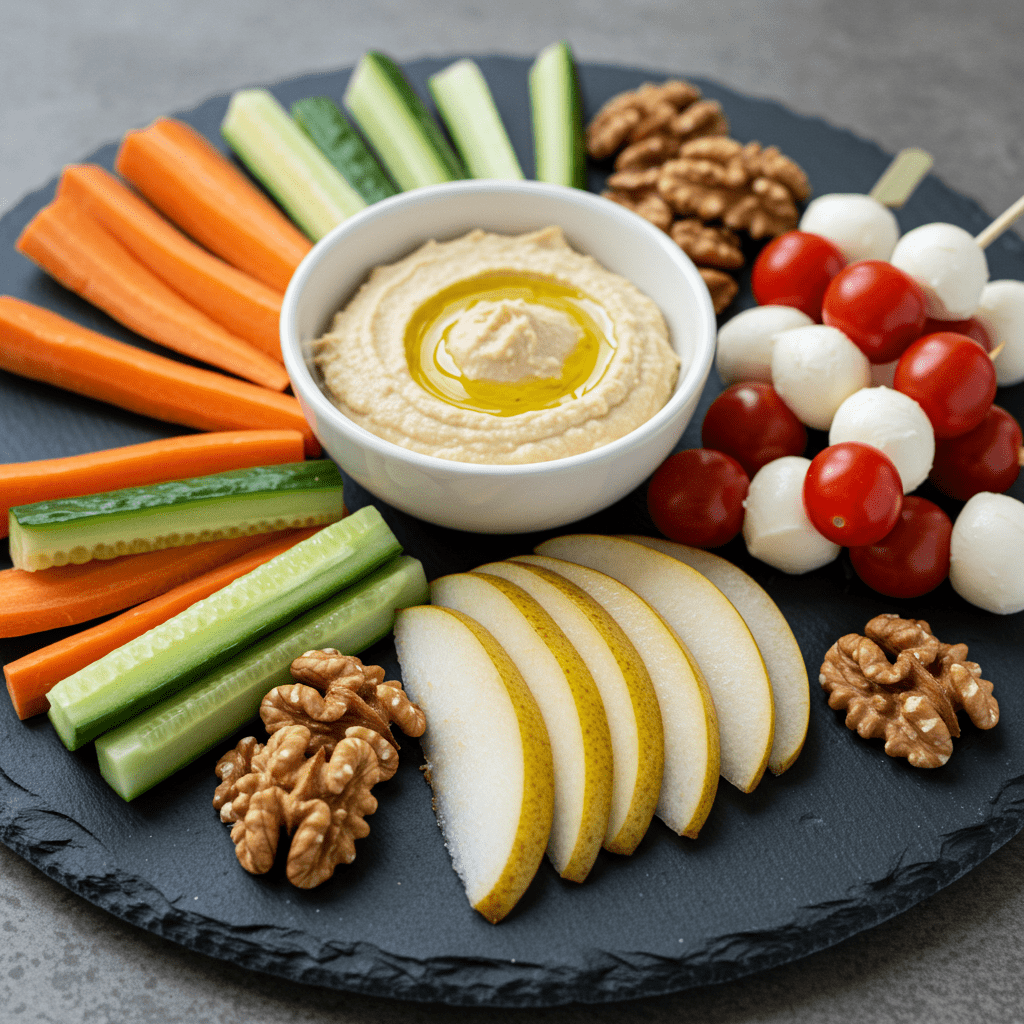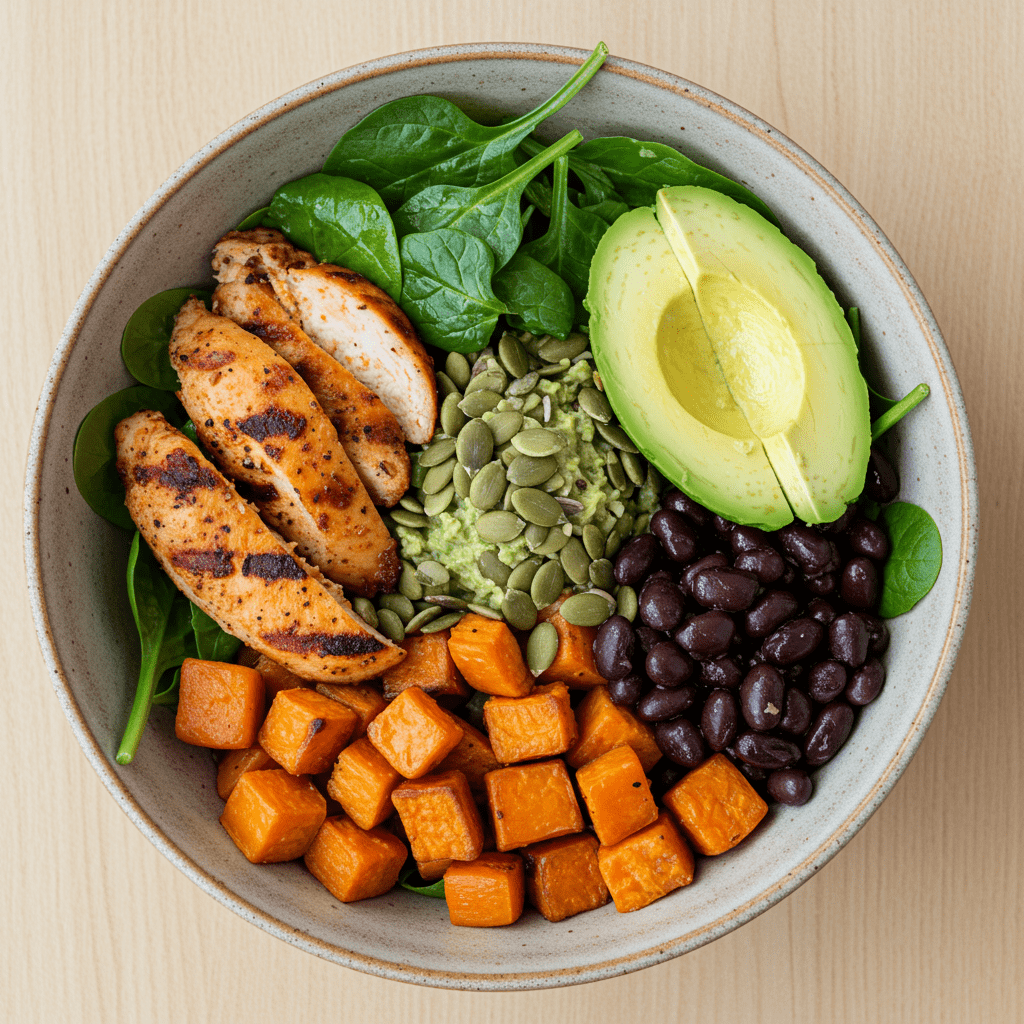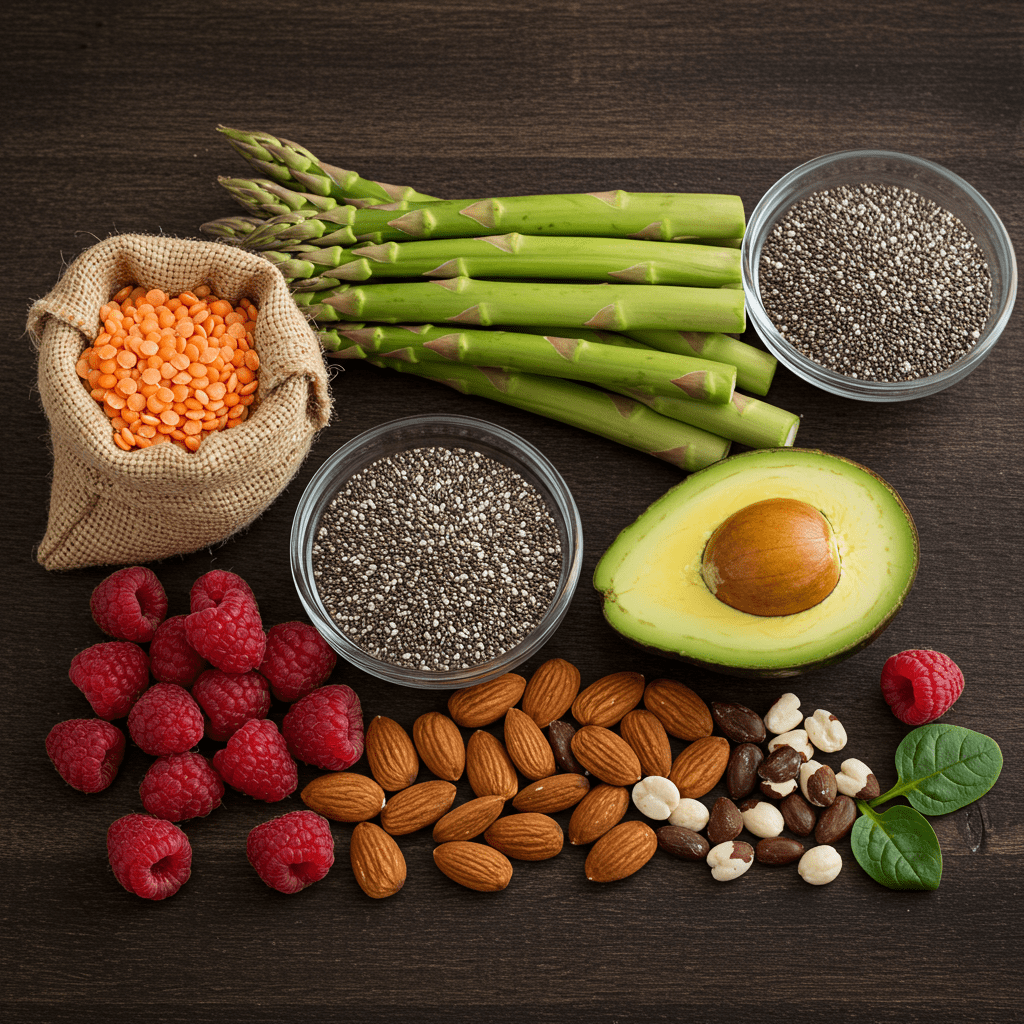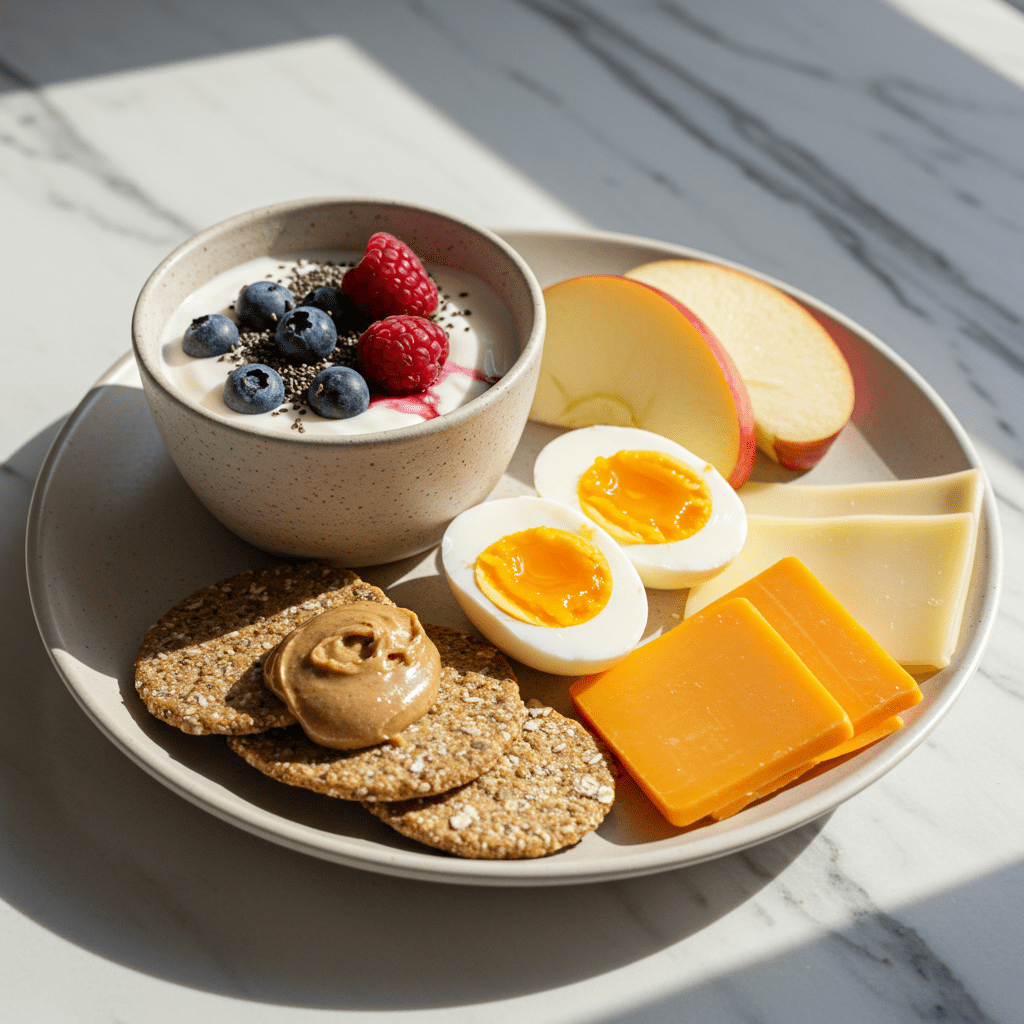Feeling Like You Can’t Stop Snacking? A Dietitian Explains Why and How to Fix It

It’s 3pm, and the urge hits. That familiar pull toward the pantry for something crunchy, salty, or sweet.
You might start with a “healthy” option like a banana (which can be transformed into a deliciously creamy ice cream), only to find yourself rummaging for chips just 30 minutes later. If you feel like you’re in a constant battle with snacking, I want you to know two things: you’re not alone, and it’s likely not your fault.
My name is Dr. Anya Sharma, and as a registered dietitian with a focus on metabolic health and sustainable habits, I’ve helped countless clients break free from the cycle of mindless grazing.
The goal isn’t to eliminate snacks—they can be a valuable part of a healthy diet! Instead, we’re going to uncover the real reasons behind your cravings and learn how to respond with intention, so you can feel satisfied, energized, and in control.
- So Is Snacking Really the Problem?
- What’s Truly Driving Your Urge to Snack?
- How to Build Meals That Actually Prevent Cravings
- Why Is Protein So Important for Feeling Full?
- Are You Getting Enough of This Key Nutrient?
- What Does Mindful Eating Actually Look Like?
- How to Build a Truly Satisfying Snack
- Could It Be Thirst Instead of Hunger?
- Conclusion
So Is Snacking Really the Problem?

First, let’s reframe the conversation. In our diet-obsessed culture, snacking has been unfairly villainized, often labeled as a bad habit that leads to weight gain.
But what if I told you that the urge to snack isn’t a moral failing? It’s a biological signal.
It’s your body’s way of communicating a need. The real issue isn’t the act of snacking itself, but the type of snacking we do.
There’s a world of difference between mindlessly eating a bag of cookies while stressed and purposefully choosing a balanced snack to bridge the gap between meals. Understanding this distinction is the first step toward regaining control.
The goal is to move from reactive, mindless grazing to proactive, strategic snacking that serves your body’s needs.
What’s Truly Driving Your Urge to Snack?

If you’re constantly feeling snacky, your body is trying to tell you something. It’s rarely just about a lack of willpower.
More often, it’s a complex interplay of biology and psychology. One of the biggest culprits is blood sugar instability.
When you eat a meal high in refined carbohydrates without sufficient protein or fiber, your blood sugar can spike and then crash, triggering intense cravings. Hormones also play a huge role.
Research published in the Journal of Clinical Endocrinology & Metabolism shows that lack of sleep significantly impacts our hunger hormones, ghrelin and leptin. When you’re sleep-deprived, your body produces more ghrelin (the ‘I’m hungry’ hormone) and less leptin (the ‘I’m full’ hormone), creating a perfect storm for overeating.
Furthermore, chronic stress increases cortisol, a hormone that, according to Harvard Health, can ramp up your appetite for high-fat, sugary ‘comfort’ foods. This often leads to reaching for convenient options, and it’s worth understanding whether boxed mac and cheese is actually healthy.
How to Build Meals That Actually Prevent Cravings

The absolute best defense against frantic, uncontrolled snacking is a well-built meal. If your main meals are satisfying and nutritionally complete, you’ll find your desire to graze between them diminishes dramatically.
I teach my clients the ‘Formula for Fullness’: Protein + Fiber + Healthy Fat. This trio works synergistically to keep you full and your blood sugar stable for hours.
Instead of a plain salad with fat-free dressing, build a ‘power bowl’ with a base of greens (fiber), grilled chicken or chickpeas (protein), avocado (healthy fat), quinoa (fiber-rich carb), and a flavorful dressing like an olive oil-based vinaigrette or a creamy buffalo ranch sauce. This approach turns a light meal into a satisfying feast that provides sustained energy, preventing that dreaded afternoon crash and the desperate search for snacks that follows.
Why Is Protein So Important for Feeling Full?

When it comes to satiety, protein is the undisputed champion. It’s the most satiating of the three macronutrients.
As a dietitian, I can’t stress this enough. When you eat protein, it not only takes longer to digest, but it also sends strong signals to your brain that you’re full.
A 2012 review in the British Journal of Nutrition confirmed that higher protein intake is consistently linked to increased feelings of fullness. Protein also has a higher ‘thermic effect of food’ (TEF), meaning your body burns more calories digesting it compared to fats and carbs.
Aiming to include a solid source of protein—like eggs, Greek yogurt, fish, tofu, or lentils—at every meal is a non-negotiable strategy for keeping hunger at bay.
Are You Getting Enough of This Key Nutrient?
Most adults don’t get enough fiber, and it’s a huge missed opportunity for managing hunger. The Academy of Nutrition and Dietetics recommends women aim for about 25 grams per day and men for 38 grams.
Fiber, particularly soluble fiber found in foods like oats, apples, and beans, slows down digestion. It forms a gel-like substance in your stomach, which dramatically increases the feeling of fullness and helps stabilize blood sugar levels.
According to the Harvard T.H. Chan School of Public Health, a high-fiber diet is essential for digestive health and preventing chronic disease.
You don’t have to live on salads; you can easily boost your intake by adding a tablespoon of chia seeds to your yogurt, switching to whole-grain bread, or incorporating lentils and beans into your soups and stews.
What Does Mindful Eating Actually Look Like?
Mindless eating is the snack’s best friend. When you’re eating while scrolling on your phone, watching TV, or working, your brain doesn’t fully register the food you’re consuming.
This leads to what I call ‘sensory amnesia’—you’ve eaten, but you don’t feel satisfied because you weren’t mentally present. Practicing mindful eating is a powerful tool.
It means plating your snack instead of eating from the bag, sitting down at a table, and paying attention to the taste, texture, and aroma of your food. Aim to eat when you’re at a 3 or 4 (gentle hunger pangs), not a 0 (ravenous).
This simple pause allows you to distinguish between true physical hunger and boredom, stress, or habit.
How to Build a Truly Satisfying Snack
Once you’ve tuned into your hunger cues, it’s time to build a better snack. The most effective snacks follow the same principle as our satisfying meals: pair a high-fiber carbohydrate with a source of protein or healthy fat.
This combination prevents the blood sugar spike you’d get from a carb-only snack and provides lasting energy. Forget the 100-calorie packs of pretzels that leave you hungry.
Instead, try one of these powerful pairings:
- Apple slices with two tablespoons of almond butter (Fiber + Fat/Protein)
- A single-serving cup of plain Greek yogurt with a handful of berries (Protein + Fiber)
- One or two hard-boiled eggs (Protein + Fat)
- A small handful of walnuts and a pear (Fat/Protein + Fiber)
- Whole-grain crackers with a few slices of cheese or a quarter of an avocado (Fiber + Fat/Protein)
These balanced options provide the nutrients your body is actually asking for, satisfying your hunger on a physiological level.
Could It Be Thirst Instead of Hunger?
The signals for hunger and thirst are regulated by the same part of the brain, the hypothalamus, and it’s surprisingly easy to mix them up. Sometimes, what feels like a craving for a snack is actually a sign of mild dehydration.
Before you head to the pantry, try this simple trick I give my clients: drink a full glass of water and wait 15 minutes. More often than you’d think, you’ll find the ‘hunger’ pangs subside.
According to Johns Hopkins Medicine, staying properly hydrated is crucial for organ function, mood, and energy levels. When we feel our best, we make better food choices.
This isn’t about using water to ‘trick’ your body or suppress real hunger, but rather about ensuring you’re responding to the right signal.
Conclusion
Ultimately, learning to manage snacking is not about restriction; it’s about attunement. It’s about tuning in to your body’s signals and learning to speak its language.
The relentless urge to snack is often a symptom of a deeper imbalance—be it nutritional, hormonal, or emotional. By building satisfying meals, prioritizing protein and fiber, getting adequate sleep, and practicing mindfulness, you give your body what it truly needs.
This transforms snacking from a mindless compulsion into a mindful choice, empowering you to build a healthier, more peaceful, and sustainable relationship with food. Give yourself grace, practice these strategies consistently, and you’ll find yourself feeling more energized and in control than ever before.
